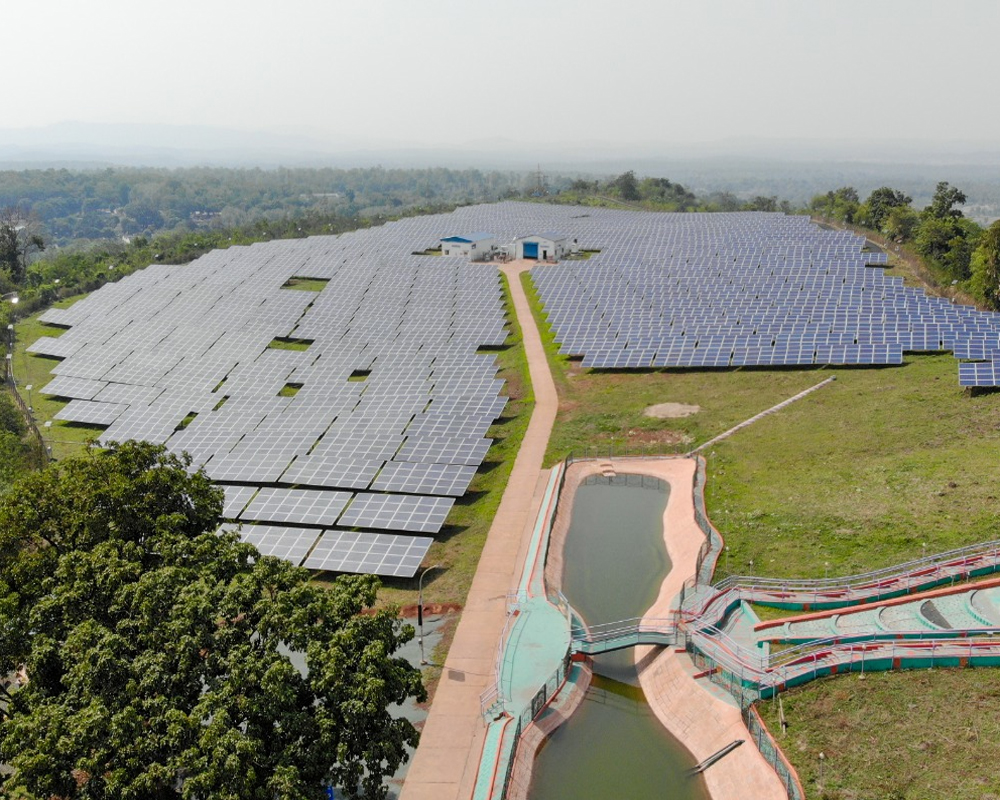With a population of 1.3 billion people, India is a rapidly growing country with a high demand for energy. As a power-deficient nation at the time of independence, India has worked for over seven decades to become an energy-independent nation. With over 4 lakh MW of installed electrical capacity, India has achieved power surplus status. With the growing importance of green energy and the pursuit of sustainable development goals, India’s power generation mix is shifting towards a higher proportion of renewable energy. The primary goal of renewable energy deployment in India is to promote economic development, improve energy security, improve access to energy sources, and mitigate climate change.
The renewable energy sector has emerged as a critical industry in the Indian economy over the years, particularly affecting power generation capacity. This thriving field of green energy has aided the government’s agenda of sustainable development while also playing an important role in meeting the country’s energy needs. Until October 2022, India had 166 GW of renewable energy capacity, ranking fifth in global solar power deployment and fourth in wind-installed capacity. It generated approximately 60.1 billion units of wind energy between 2020 and 21 and has the potential to generate even more.
Furthermore, solar power capacity has increased 11 times in the last five years, from 2.6 GW in March 2014 to 30 GW in July 2019. In India, the solar tariff is currently very competitive and has reached grid parity. However, the country has set a lofty goal of producing 175 GW of renewable energy by the end of 2022, with a target of 500 GW by 2030. This is the largest renewable energy expansion strategy in history.
As the nation strives to become a leader in renewable energy, access to financing remains one of the biggest challenges. This challenge can be addressed through corporate social responsibility. The Companies Act 2013, which introduced the concept of corporate social responsibility, places the onus on businesses to develop policies that will help uplift communities. There are numerous societal benefits to corporate social responsibility. Companies can use their CSR funds to fulfil their responsibility to build a better society in a variety of ways, including sponsoring environmental sustainability.

Top corporations in India have made significant commitments to include renewable energy in their power mix, and they are following through. Taking advantage of the concept of the “right to clean energy,” many businesses have begun to diversify their CSR funds into solar energy. For example, Tata Steel has installed a 3MW solar project in Noamudi in Jharkhand.
Another appropriate example would be Sasken Technologies Limted, a Bengaluru-based company that uses renewable energy such as wind power and rooftop solar panels within their office complex. They are saving nearly 220 tonnes of CO2 per month as a result of the installation. As part of their CSR compliance, Sasken has powered up the entire village of Belagavadi in rural Karnataka with inverter-less solar DC technology pioneered by IIT-Madras, covering approximately 250 houses, making it the first village in Karnataka to be powered entirely by solar.
In a few villages in south India, Hindustan Aeronautics Limited (HAL) has installed solar water heaters and lamps. Over 50 government schools in the Gubbi Taluk of Karnataka received 4 kW solar power systems with battery backup as part of the organisation’s CSR activity. The corporation pledged to install 50 MW of renewable energy projects, and it has already put in place wind and solar power projects with a combined capacity of around 46 MW.
While CSR compliance and the global focus on the UN’s Sustainable Development Goals have pushed corporations to focus on sustainability, data shows that CSR spending on clean energy needs to be improved. According to the National CSR data portal, the majority of the CSR funds have been invested in Education and Healthcare. Under environment, animal welfare, conservation of resources a total amount of INR 1332.03 crores was spent in FY 2020-21, out of which INR 1029.12 crores were spent on environment sustainability.
For India to achieve its target of net-zero emissions by the year 2070, it needs to tap into the full potential of corporate social responsibility, for the latter has the capacity to effect increased adoption of clean energy choices and introduce ground-level behavioural changes. India must build a clean energy system based on dependability, affordability, sustainability, and energy independence, while keeping goals and economic considerations in mind. With so many options, achieving the goal and fostering robust economic growth is a technological as well as a financial challenge. As a result, government policy must continue to encourage green energy innovation, research, and implementation across all energy distribution paths.
